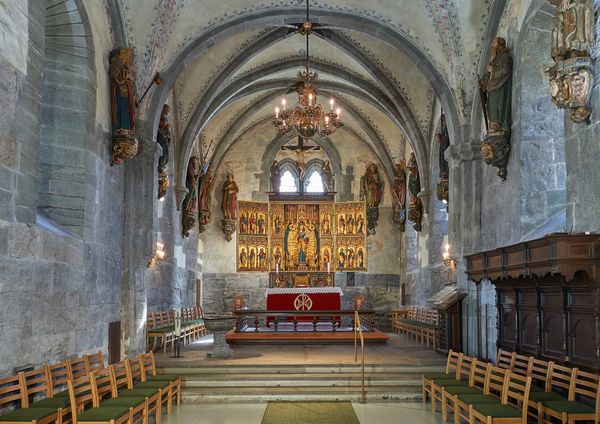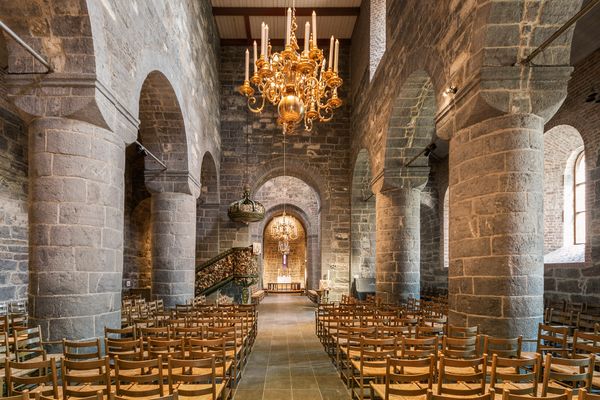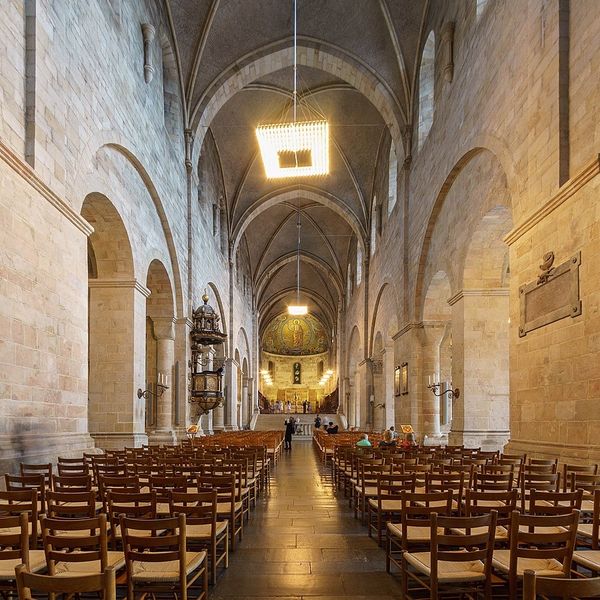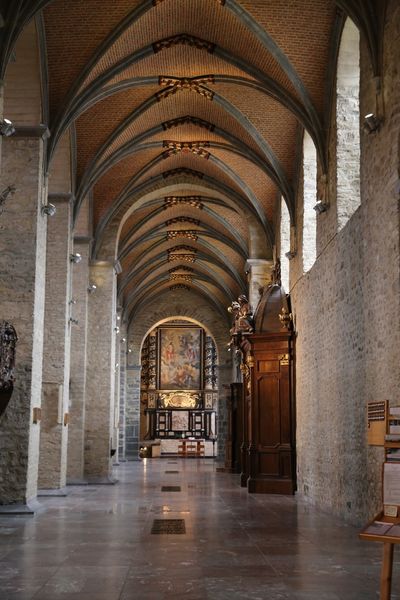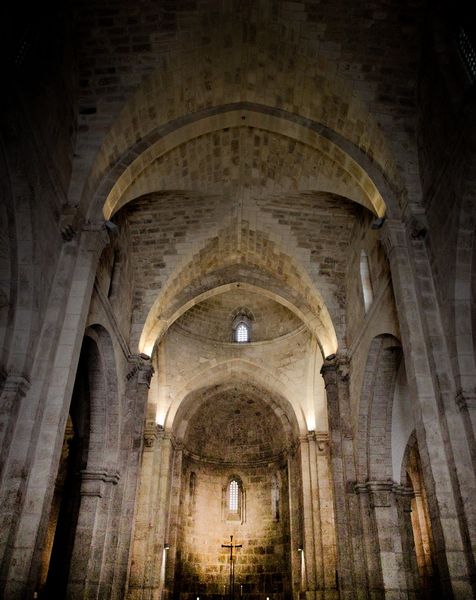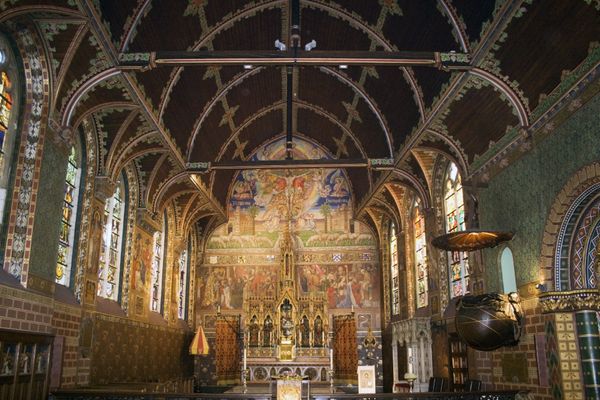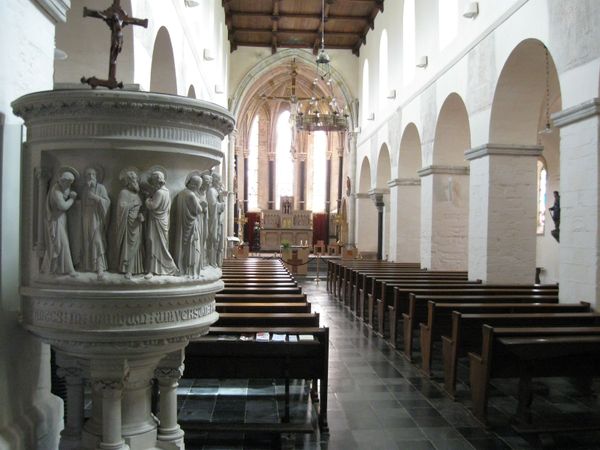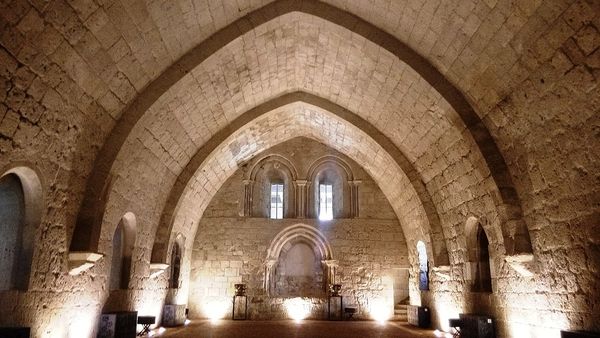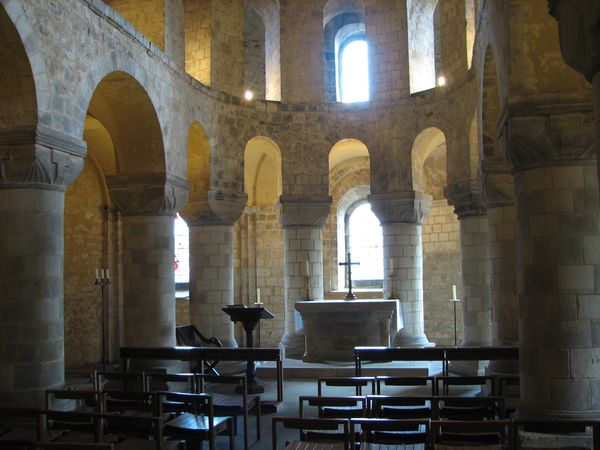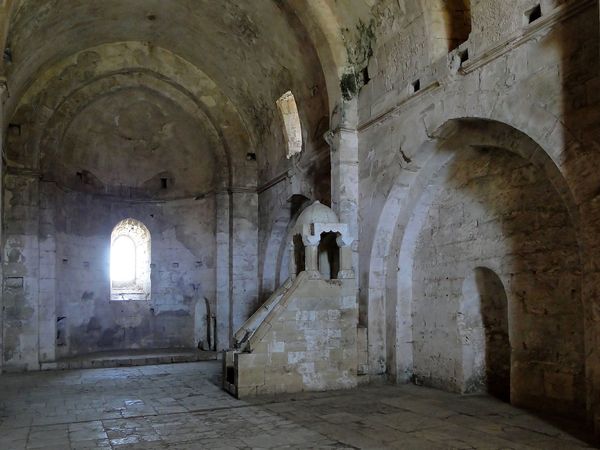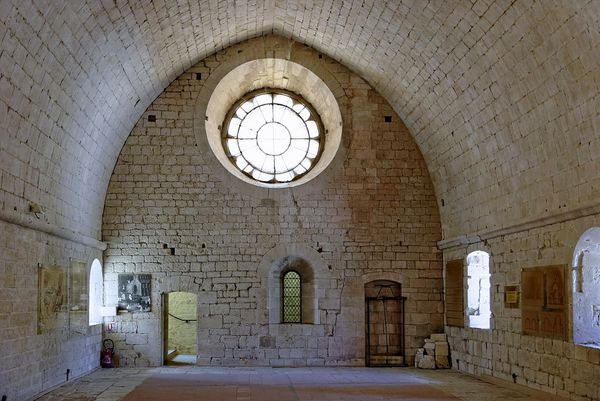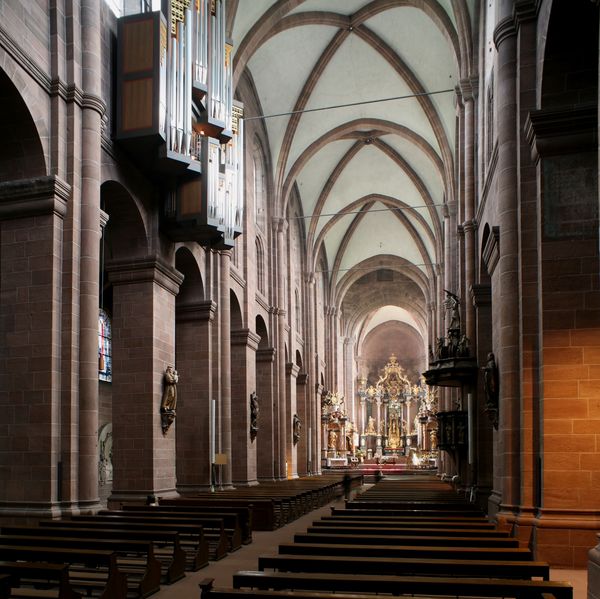
carving, architecture
#
medieval
#
carving
#
sculpture
#
romanesque
#
architecture
#
architecture
Copyright: Public domain
Curator: Let’s consider this interior view of Nes Church, Ringsaker, Norway, dating back to around 1250, a fascinating example of Romanesque architecture. Editor: Wow, that space! It has such a severe, almost primeval feel. The heavy stonework, combined with the minimal light... it evokes such solemnity and starkness. Curator: The construction itself tells a story. This would have been a substantial investment of resources, reflecting the power and influence of the church in medieval society. Consider the labor involved in quarrying, transporting, and shaping those stones. The carving and shaping work alone indicate advanced skill! Editor: Absolutely. The context of its construction shapes how we view it. Thinking about medieval power dynamics, it's a visual statement. Beyond pure aesthetics, this design also highlights the role that the church had in both controlling, and cultivating the identity of the emerging region and its faithful congregation. Did local artisans execute the works? Curator: It's highly probable that local or regional craftsmen, using local materials, would have been primarily responsible. They shaped their traditions, techniques, and understanding of Romanesque principles in architecture, of the region's labor structures, but with religious demands by a select few. Editor: So much of the effect relies on texture, wouldn't you say? That rough stone... It emphasizes permanence and an almost willful lack of polish. A place of the sacred shouldn't be pretty? It speaks to the harshness of medieval life, perhaps deliberately presenting religion as the antidote, in direct contrast with all the other earthly domains and worries? Curator: The deliberate use of such raw, tactile materials underscores an emphasis on function and endurance. In its original state, unpainted, imagine how it directed focus to spiritual purposes, stripping the faithful away from luxury towards something primal and lasting? Editor: Right, away from secular pleasures. A real commitment to spiritual immersion by any means possible, almost violent in its intention. Curator: Exactly. Reflecting on Nes Church lets us appreciate not just its artistry but also the physical and social fabric that birthed it. Editor: And question, perhaps, those systems which facilitated and necessitated such contrasts.
Comments
No comments
Be the first to comment and join the conversation on the ultimate creative platform.

